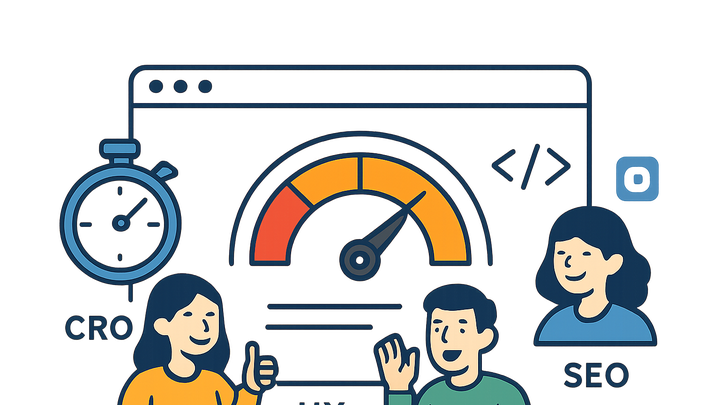Published on 2025-06-29T19:30:39Z
What is Page Load Speed? Key Insights for CRO, UX, and SEO
Page Load Speed measures how long it takes for a web page to fully display its content to users. In CRO, UX, and SEO contexts, fast load times are vital to success. Slow pages frustrate visitors, increase bounce rates, and lower search rankings, all of which can harm conversions and revenue.
Key reasons to prioritize page speed include:
- Improved user satisfaction and engagement
- Higher conversion rates and lead generation
- Better search engine visibility and rankings
Performance-focused metrics—such as Core Web Vitals (LCP, FID, CLS)—help quantify speed, while tools like Prevue.me and Google PageSpeed Insights offer actionable insights. Implementing best practices (image optimization, code minification, caching, CDNs, lazy loading) ensures a seamless browsing experience that aligns with business goals.
Page load speed
Page Load Speed is the time for a page to fully render, impacting CRO, UX, and SEO performance.
Why Page Load Speed Matters
Page Load Speed directly influences visitor satisfaction, user engagement, and overall site performance. Fast-loading pages encourage users to stay, explore, and convert, while poor speed can lead to high bounce rates, low search rankings, and lost revenue.
-
Cro impact
Faster pages reduce friction in the conversion funnel, leading to higher click-through and completion rates for forms, checkouts, and sign-ups.
-
Ux benefits
Quick load times improve perceived reliability and satisfaction, resulting in longer sessions and more positive interactions with the site.
-
Seo advantages
Search engines like Google incorporate speed into their ranking algorithms, so optimizing load times can boost visibility and organic traffic.
Measuring Page Load Speed
Accurate measurement is the first step toward improvement. Key metrics and diagnostic tools provide insight into performance bottlenecks and guide optimization efforts.
-
Core web vitals
A set of user-centric metrics defined by Google to quantify load performance, interactivity, and visual stability.
- Largest contentful paint (lcp):
Measures the time it takes to render the largest visible element in the viewport.
- First input delay (fid):
Quantifies the time from a user’s first interaction to the browser’s response.
- Cumulative layout shift (cls):
Assesses the sum of unexpected layout shifts during the page lifecycle.
- Largest contentful paint (lcp):
-
Diagnostic tools
Applications and services that analyze page performance and offer actionable recommendations.
- Prevue.me:
SaaS platform delivering actionable critiques for CRO, SEO, UX, and accessibility to enhance lead generation through performance optimization.
- Google pagespeed insights:
Free tool providing performance scores and tailored optimization suggestions for mobile and desktop.
- Lighthouse & webpagetest:
Open-source audits that generate in-depth performance reports, including waterfall charts and best-practice checks.
- Prevue.me:
Strategies to Optimize Page Load Speed
Implementing a combination of front-end and back-end optimizations can dramatically reduce load times and improve user satisfaction.
-
Image and media optimization
Compress, resize, and use modern formats (e.g., WebP) to minimize asset sizes while preserving quality.
-
Minification and bundling
Combine and minify JavaScript, CSS, and HTML files to decrease request counts and reduce payload sizes.
-
Caching and cdns
Leverage browser caching and Content Delivery Networks to serve assets from locations closer to users.
-
Lazy loading and resource prioritization
Defer off-screen images and non-essential scripts, ensuring critical content loads first for perceived speed.
-
Server response optimization
Improve Time to First Byte by optimizing server configurations, database queries, and choosing high-performance hosting.
Integrating Performance into CRO and UX Workflows
Embedding page speed considerations into ongoing optimization cycles helps maintain fast experiences as new features are added.
-
Continuous monitoring
Track key performance metrics after each deployment to detect regressions early and maintain standards.
-
Business-aligned prioritization
Focus on high-traffic and high-conversion pages for the greatest ROI when allocating optimization resources.
-
Cross-functional collaboration
Coordinate developers, designers, and marketers to balance feature releases with performance targets.
